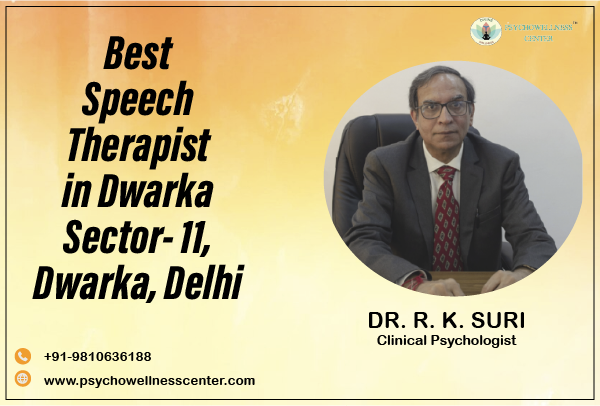Apraxia of Speech (AOS) is a neurological speech disorder that affects a person’s ability to coordinate the movements needed for clear and precise speech. Unlike other speech disorders, where muscle weakness or physical impairment causes difficulty, Apraxia of Speech results from the brain struggling to send the correct signals to the speech muscles. This condition can be present in both children (Childhood Apraxia of Speech, CAS) and adults, often following a stroke or traumatic brain injury.
Individuals with Apraxia of Speech may experience stress, anxiety, and low self-esteem due to communication difficulties. They may struggle with self-confidence, face social isolation, and even experience depression due to frustration with their speech. Understanding the symptoms and treatment options available, including speech therapy and psychotherapy, can help individuals regain confidence and improve their communication skills.
Symptoms of Apraxia of Speech
The symptoms of Apraxia of Speech can vary depending on severity and age. Some individuals may experience only mild difficulty, while others may struggle significantly to form words.
Common Symptoms in Children (Childhood Apraxia of Speech – CAS)
- Inconsistent speech errors – A child may say a word correctly once and struggle with it later.
- Difficulty imitating speech sounds – The brain struggles to plan and coordinate speech movements.
- Distorted vowels and consonants – Sounds may be slurred or unclear.
- Groping movements – The child’s mouth may visibly move to find the right speech position.
- Slow progress in speech development – Limited vocabulary and difficulty forming full sentences.
Increased difficulty with longer words and phrases – Short words may be easier to pronounce than longer ones.
Common Symptoms in Adults (Acquired Apraxia of Speech – AOS)
- Struggling to pronounce words correctly – Speech may be inconsistent and effortful.
- Pausing between syllables or words – The person may hesitate or struggle to transition smoothly between sounds.
- Speaking with difficulty but understanding language perfectly – Unlike aphasia, which affects comprehension, AOS only impacts speech production.
- Frustration when speaking – Repeated speech failures may lead to stress, anxiety, and self-esteem issues.
- Co-existing neurological conditions – AOS often occurs alongside stroke, brain injury, or neurodegenerative disorders.
Since Apraxia of Speech impacts daily communication, early intervention through speech therapy and psychotherapy is crucial in improving speech fluency and reducing emotional distress.
Causes of Apraxia of Speech
Childhood Apraxia of Speech (CAS) is typically due to abnormal brain development, though the exact cause is unknown. It is not due to muscle weakness but rather the brain’s difficulty in coordinating speech movements.
Acquired Apraxia of Speech (AOS) often results from:
- Stroke – Damage to the brain’s speech centers can disrupt motor planning.
- Traumatic Brain Injury (TBI) – A severe head injury can impact speech coordination.
- Neurodegenerative Diseases – Conditions like Parkinson’s disease or Alzheimer’s can contribute to AOS.
Regardless of the cause, treatment options focus on improving speech coordination and addressing the emotional and psychological impact of the condition.
Treatment for Apraxia of Speech
The primary treatment for Apraxia of Speech is speech therapy, often combined with psychotherapy to help individuals cope with the emotional challenges of communication difficulties.
1. Speech Therapy for Apraxia of Speech
Speech therapy is essential for improving speech coordination and fluency. Some key approaches include:
a) Motor Planning Therapy
Focuses on repetition and practice to retrain the brain in speech movements.
Uses visual and tactile cues to help individuals correctly position their mouth and tongue.
b) Articulatory Kinematic Therapy
Breaks down speech sounds into smaller parts to improve accuracy.
Uses slow and controlled speech exercises to reinforce correct pronunciation.
c) PROMPT
Uses tactile-kinesthetic cues where a therapist physically guides the patient’s mouth to form correct sounds.
d) Melodic Intonation Therapy (MIT)
Uses singing and rhythm-based techniques to improve speech fluency.
Helps individuals with severe speech apraxia regain communication abilities.
e) Augmentative and Alternative Communication (AAC)
Tools like picture boards and speech-generating devices can assist individuals who struggle with verbal communication.
Speech therapy plays a crucial role in rebuilding self-confidence, reducing anxiety, and improving social interaction.
Psychowellness Center : A Boon Of Hope
Psychowellness Center provides expert care for individuals struggling with Apraxia of Speech. Their multidisciplinary approach combines speech therapy, psychotherapy, and cognitive interventions to address both the speech and emotional challenges associated with the condition.
- Dr. R K Suri – A distinguished clinical psychologist with extensive experience in cognitive rehabilitation and speech-related disorders. He focuses on helping individuals regain lost speech abilities while addressing underlying stress, anxiety, and self-esteem issues.
- Dr. Alam – A highly skilled speech-language pathologist, specialising in diagnosing and treating speech disorders, including Apraxia of Speech. His expertise in motor speech therapy and articulation training helps patients develop better speech clarity and fluency.
- Mr. Utkarsh Yadav – A dedicated therapist providing behavioural therapy and social communication training to enhance verbal expression and reduce the frustration associated with speech difficulties. His approach focuses on improving self-confidence and emotional resilience.
- Ms. Sakshi Dhankhar – An expert in Cognitive-Behavioral Therapy (CBT) and mindfulness techniques, she helps individuals cope with the anxiety, panic attacks, and self-doubt that often accompany speech disorders, ensuring holistic emotional and psychological support.
- Ms. Tanu Sangwan – A skilled psychotherapist who combines speech interventions, emotional regulation strategies, and relaxation techniques to assist individuals in overcoming both the linguistic and psychological barriers of Apraxia of Speech.
Conclusion
Apraxia of Speech is a challenging condition, but with the right combination of speech therapy and psychotherapy, individuals can regain their ability to communicate effectively. If you or a loved one is struggling with Apraxia of Speech, seeking professional help from experts like top psychologists at Psychowellness Center, R K Suri, Dr. Alam, Utkarsh Yadav, Sakshi Dhankhar, and Tanu Sangwan can provide the guidance needed to rebuild self-esteem, self-confidence, and social communication skills.

